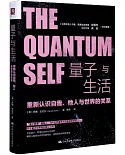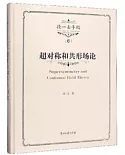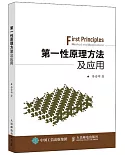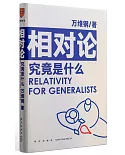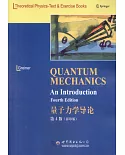所有的光場都是隨機漲落的,有些光場的隨機漲落很小,例如許多激光器輸出的光;有些光場的隨機漲落相當大,例如從熱光源輻射的光。描述漲落光場的基礎理論是相干理論。
部分偏振現象就是漲落的重要表現。實際上,相干理論所能處理的問題不僅限於漲落。與常規的處理方法不同,相干理論是依據可觀測量描述光場,並解釋這些可觀測量,例如光的光譜以及它在傳輸中如何變化的。
《光的相干與偏振理論導論(英文影印版)》給出了光的相干與偏振現象的統一處理方法。適合光通信、激光光束在光纖中和通過湍流大氣傳輸、光學成像,尤其在顯微鏡成像(例如醫學診斷)的物理界和工程界的研究者閱讀。
目錄
Preface page xi
1. Elementary coherence phenomena
1.1 Interference and statistical similarity
1.2 Temporal coherence and the coherence time
1.3 Spatial coherence and the coherence area
1.4 The coherence volume
Problems
2. Mathematical preliminaries
2.1 Elementary concepts of the theory of random processes
2.2 Ergodicity
2.3 Complex representation of a real signal and the envelope of a narrow-band signal
2.4 The autocorrelation and the cross-correlation functions
2.4.1 The autocorrelation function of a finite sum of periodic components with random amplitudes
2.5 The spectral density and the Wiener-Khintchine theorem
Problems
3. Second-order coherence phenomena in the space-time domain
3.1 Interference law for stationary optical fields. The mutual coherence function and the complex degree of coherence
3.2 Generation of spatial coherence from an incoherent source. The van Cittert-Zernike theorem
3.3 Illustrative examples
3.3.1 Michelson’’s method for measuring stellar diameters
3.3.2 Michelson’’s method for determining energy distribution in spectral lines
3.4 Propagation of the mutual intensity
3.5 Wave equations for the propagation of mutual coherence in free space
Problems
4. Second-order coherence phenomena in the space-frequency domain
4.1 Coherent-mode representation and the cross-spectral density as a correlation function
4.2 The spectral interference law and the spectral degree of coherence
4.3 An illustrative example: spectral changes on interference
4.4 Interference of narrow-band light
Problems
5. Radiation from sources of different states of coherence
5.1 Fields generated by sources with different coherence properties
5.2 Correlations and the spectral density in the far field
5.3 Radiation from some model sources
5.3.1 Schell-model sources
5.3.2 Quasi-homogeneous sources
5.4 Sources of different states of spatial coherence which generate identical distributions of the radiant intensity
5.5 Coherence properties of Lambertian sources
5.6 Spectral changes on propagation. The scaling law
Problems
6. Coherence effects in scattering
6.1 Scattering of a monochromatic plane wave on a deterministic medium
6.2 Scattering of partially coherent waves on a deterministic medium
6.3 Scattering on random media
6.3.1 General formulas
6.3.2 Examples
6.3.3 Scattering on a quasi-homogeneous medium
Problems
7. Higher-order coherence effects
7.1 Introduction
7.2 Intensity interferometry with radio waves
7.3 The Hanbury Brown-Twiss effect and intensity interferometry with light
7.4 Einstein’’s formula for energy fluctuations in blackbody radiation and the wave-particle duality
7.5 Mandel’’s theory of photoelectric detection of light fluctuations
7.5.1 Mandel’’s formula for photocount statistics
7.5.2 The variance of counts from a single photodetector
7.5.3 Correlation between count fluctuations from two detectors
7.6 Determination of statistical properties of light from photocount measurements
Problems
8. Elementary theory of polarization of stochastic electromagnetic beams
8.1 The 2 _ 2 equal-time correlation matrix of a quasi-monochromatic electromagnetic beam
8.2 Polarized, unpolarized and partially polarized light. The degree of polarization
8.2.1 Completely polarized light
8.2.2 Natural (unpolarized) light
8.2.3 Partially polarized light and the degree of polarization
8.2.4 The geometrical significance of complete polarization. The Stokes parameters of completely polarized light. The Poincaré sphere
Problems
9. Unified theory of polarization and coherence
9.1 The 2 × 2 cross-spectral density matrix of a stochastic electromagnetic beam
9.2 The spectral interference law, the spectral degree of coherence and the spectral degree of polarization of stochastic electromagnetic beams
9.3 Determination of the cross-spectral density matrix from experiments
9.4 Changes in random electromagnetic beams on propagation
9.4.1 Propagation of the cross-spectral density matrix of a stochastic electromagnetic beam - general formulas
9.4.2 Propagation of the cross-spectral density matrix of an electromagnetic Gaussian Schell-model beam
9.4.3 Examples of correlation-induced changes in stochastic electromagnetic beams on propagation
9.4.4 Coherence-induced changes of the degree of polarization in Young’’s interference experiment
9.5 Generalized Stokes parameters
Problems
Appendices
Ⅰ Cells of phase space and the degeneracy parameter
(a) Cells of phase space of a quasi-monochromatic light wave (Section 1.4)
(b) Cells of phase space of radiation in a cavity (Sections 7.4 and 7.5)
(c) The degeneracy parameter
Ⅱ Derivation of Mandel’’s formula for photocount statistics [Eq. (2) of Section 7.5.1]
Ⅲ The degree of polarization of an electromagnetic Gaussian Schell-model source
Ⅳ Some important probability distributions
(a) The binomial (or Bernoulli) distribution and some of its limiting cases
(b) The Bose-Einstein distribution
Author index
Subject index
1. Elementary coherence phenomena
1.1 Interference and statistical similarity
1.2 Temporal coherence and the coherence time
1.3 Spatial coherence and the coherence area
1.4 The coherence volume
Problems
2. Mathematical preliminaries
2.1 Elementary concepts of the theory of random processes
2.2 Ergodicity
2.3 Complex representation of a real signal and the envelope of a narrow-band signal
2.4 The autocorrelation and the cross-correlation functions
2.4.1 The autocorrelation function of a finite sum of periodic components with random amplitudes
2.5 The spectral density and the Wiener-Khintchine theorem
Problems
3. Second-order coherence phenomena in the space-time domain
3.1 Interference law for stationary optical fields. The mutual coherence function and the complex degree of coherence
3.2 Generation of spatial coherence from an incoherent source. The van Cittert-Zernike theorem
3.3 Illustrative examples
3.3.1 Michelson’’s method for measuring stellar diameters
3.3.2 Michelson’’s method for determining energy distribution in spectral lines
3.4 Propagation of the mutual intensity
3.5 Wave equations for the propagation of mutual coherence in free space
Problems
4. Second-order coherence phenomena in the space-frequency domain
4.1 Coherent-mode representation and the cross-spectral density as a correlation function
4.2 The spectral interference law and the spectral degree of coherence
4.3 An illustrative example: spectral changes on interference
4.4 Interference of narrow-band light
Problems
5. Radiation from sources of different states of coherence
5.1 Fields generated by sources with different coherence properties
5.2 Correlations and the spectral density in the far field
5.3 Radiation from some model sources
5.3.1 Schell-model sources
5.3.2 Quasi-homogeneous sources
5.4 Sources of different states of spatial coherence which generate identical distributions of the radiant intensity
5.5 Coherence properties of Lambertian sources
5.6 Spectral changes on propagation. The scaling law
Problems
6. Coherence effects in scattering
6.1 Scattering of a monochromatic plane wave on a deterministic medium
6.2 Scattering of partially coherent waves on a deterministic medium
6.3 Scattering on random media
6.3.1 General formulas
6.3.2 Examples
6.3.3 Scattering on a quasi-homogeneous medium
Problems
7. Higher-order coherence effects
7.1 Introduction
7.2 Intensity interferometry with radio waves
7.3 The Hanbury Brown-Twiss effect and intensity interferometry with light
7.4 Einstein’’s formula for energy fluctuations in blackbody radiation and the wave-particle duality
7.5 Mandel’’s theory of photoelectric detection of light fluctuations
7.5.1 Mandel’’s formula for photocount statistics
7.5.2 The variance of counts from a single photodetector
7.5.3 Correlation between count fluctuations from two detectors
7.6 Determination of statistical properties of light from photocount measurements
Problems
8. Elementary theory of polarization of stochastic electromagnetic beams
8.1 The 2 _ 2 equal-time correlation matrix of a quasi-monochromatic electromagnetic beam
8.2 Polarized, unpolarized and partially polarized light. The degree of polarization
8.2.1 Completely polarized light
8.2.2 Natural (unpolarized) light
8.2.3 Partially polarized light and the degree of polarization
8.2.4 The geometrical significance of complete polarization. The Stokes parameters of completely polarized light. The Poincaré sphere
Problems
9. Unified theory of polarization and coherence
9.1 The 2 × 2 cross-spectral density matrix of a stochastic electromagnetic beam
9.2 The spectral interference law, the spectral degree of coherence and the spectral degree of polarization of stochastic electromagnetic beams
9.3 Determination of the cross-spectral density matrix from experiments
9.4 Changes in random electromagnetic beams on propagation
9.4.1 Propagation of the cross-spectral density matrix of a stochastic electromagnetic beam - general formulas
9.4.2 Propagation of the cross-spectral density matrix of an electromagnetic Gaussian Schell-model beam
9.4.3 Examples of correlation-induced changes in stochastic electromagnetic beams on propagation
9.4.4 Coherence-induced changes of the degree of polarization in Young’’s interference experiment
9.5 Generalized Stokes parameters
Problems
Appendices
Ⅰ Cells of phase space and the degeneracy parameter
(a) Cells of phase space of a quasi-monochromatic light wave (Section 1.4)
(b) Cells of phase space of radiation in a cavity (Sections 7.4 and 7.5)
(c) The degeneracy parameter
Ⅱ Derivation of Mandel’’s formula for photocount statistics [Eq. (2) of Section 7.5.1]
Ⅲ The degree of polarization of an electromagnetic Gaussian Schell-model source
Ⅳ Some important probability distributions
(a) The binomial (or Bernoulli) distribution and some of its limiting cases
(b) The Bose-Einstein distribution
Author index
Subject index
網路書店
類別
折扣
價格
-
新書87折$214



















